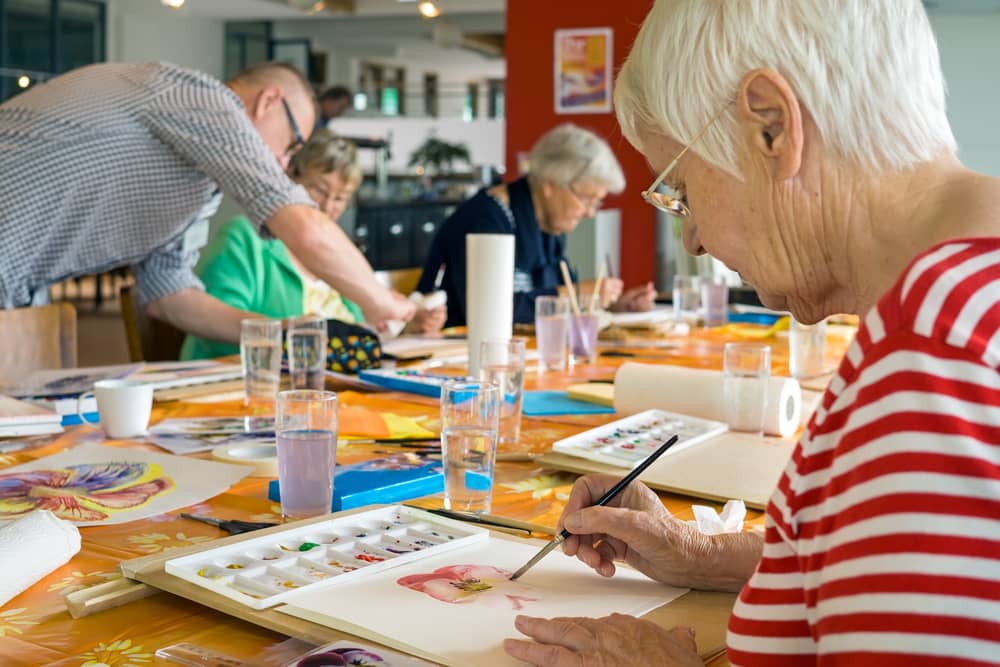Activities of daily living (ADLs) are the essential, everyday tasks necessary for self-sufficiency and independent living. Unfortunately, these functions are often difficult (or impossible) for seniors and people with disabilities due to mental and/or physical limitations. Many people refuse to seek assistance with ADLs, putting them in unsafe situations that may result in hospitalization.
In this blog, we’ll explore activities of daily living and instrumental activities of daily living (IADLs) to give you a better understanding of these important tasks. We’ll also take a closer look at the crucial role of ADL assessments and three common ways to measure them
What Are Activities of Daily Living (ADLs)?
As previously mentioned, activities of daily living are the fundamental physical tasks that directly impact our ability to live independently. While healthy people may take them for granted, basic activities of daily living are often more difficult for people who have experienced:
- Acute or chronic illness
- Cognitive or mental decline (e.g. Alzheimer’s disease or dementia)
- Hospitalization
- Medication side effects, overuse, and/or negative drug interactions
- Musculoskeletal, neurological, circulatory, or sensory conditions
- Poor home or nursing environments
- Social isolation
Some seniors and people with disabilities receive help with ADLs through trained aides and/or specialized assistive technology. However, because this assistance isn’t always covered by Medicare or private insurance, many people cannot afford the help they need. Individuals in lower socioeconomic groups often find it particularly difficult to access care and assistance with ADLs and IADLs.

Activities of Daily Living Examples
There are five main activities of daily living, which we’ll review in detail below:
- Ambulation (or functional mobility) refers to moving from one position to another (like getting in and out of bed or chairs), walking, and climbing stairs. Individuals who cannot safely ambulate are more likely to fall, which is proven to increase mortality rates.
- Self-feeding, but not necessarily the ability to prepare food.
- Continence, or the ability to control bladder and bowel function.
- Personal care, including bathing/showering, toileting, grooming, dressing/undressing, and personal hygiene (e.g. dental, hair, and nail care).
- Safety and emergency response, or the ability to extricate oneself from dangerous situations.
What Are Instrumental Activities of Daily Living (IADLs)?
Instrumental activities of daily living (IADLs) aren’t necessary for survival, but they do facilitate a more enriching life at home and in the community. Research shows that around 18% of adults aged 75+ need assistance with one or more instrumental activities of daily living. However, because IADLs aren’t as closely tied to dignity and personal space as ADLs, most people are willing to seek additional support to complete them.
The inability to perform IADLs can result from a variety of factors, including:
- Medication side effects, interactions, or overuse
- Lack of sleep
- Early-onset dementia
- Nutritional deficiencies
- Worsening pre-existing conditions
Instrumental Activities of Daily Living Examples
You’ll find a list of the most common instrumental activities of daily living below:
- Basic communication and technology use
- Basic home maintenance and yard work
- Financial management (budgeting, writing checks, paying bills, and avoiding scams)
- Housekeeping (doing laundry, dusting, vacuuming, cleaning the kitchen and bathroom, doing dishes, and taking out the trash)
- Meal planning and preparation (cooking, cleaning up, storing food, and safely using kitchen equipment and utensils)
- Medication management (obtaining medications and taking them as directed)
- Running errands and going to appointments
- Shopping for clothing, groceries, and other necessities
- Transportation (driving, arranging rides, and/or using public transit)
What Are Domestic Activities of Daily Living (DADLs)?
Like IADLs, domestic activities of daily living (DADLs) enhance your quality of life and help you stay connected to the larger community. However, these pursuits are typically hobbies or leisure activities, rather than mundane tasks. DADLs are often discontinued due to aging or disability status. Examples of domestic activities of daily living include:
- Playing a musical instrument
- Painting, drawing, or sculpting
- Physical exercise
- Mental exercise (puzzles, board games, trivia, etc.)
- Socialization through group activities
- Caring for pets
- Hobbies that require fine motor skills (knitting, model building, etc.)

What Are ADL & IADL Assessments?
Healthcare providers use ADL and IADL assessments to determine the benefits you’ll receive through disability insurance and/or long-term care insurance policies. In most states, the inability to meet 2-3 ADL goals is the baseline criteria required for participation in assistance programs.
Assessments also help healthcare providers predict the likelihood that you’ll need paid home care, nursing home admission, or hospitalization in the future. Medicaid requires participants to qualify for nursing care, which is partially determined by ADL assistance levels. Additionally, most long-term care policies and Social Security Disability Insurance (SSDI) consider ADLs as qualification factors.
Your local Area Agency on Aging (AAA) can connect you with financial assistance opportunities, and they typically conduct ADL and IADL assessments during the application process.
How Are ADL & IADL Assessments Performed?
There are two main ways to assess your ADL and IADL proficiencies, which we’ll review below:
- Online assessment tools are intended for at-home, nonprofessional use. You’ll answer a series of questions about your ability to perform ADLs and IADLs, and you can use the results to determine whether you need a formal assessment.
- Formal assessments are performed by general practitioners or occupational therapists. Unlike many online assessments, they focus on your medical well-being and ability to perform ADLs. In some cases, formal assessments may be covered by Medicare or private insurance.
Try This Activities of Daily Living Checklist
If you’re looking for a daily living skills checklist, we recommend this informal evaluation from the Public Broadcasting Service (PBS) and American Association of Retired Persons (AARP). It’s designed to help you determine which ADLs and IADLs you need help with and the level of assistance required. You’ll find a variety of basic activities of daily living that are scored at three levels: independent, needs help, and dependent.
Common ADL & IADL Assessment Methods
There are three main ADL and IADL assessment methods, which we’ll review below.
Katz Index of Independence in Activities of Daily Living
One of the oldest (and most respected) assessment methods is the Katz Index of Independence in Activities of Daily Living. While this approach assesses basic ADLs, it doesn’t consider instrumental activities of daily living. In other words, it focuses on changes in declining health status and how they affect the ability to perform ADLs.
The Katz Index provides healthcare providers with a common language to discuss patient function, overall care, and discharge planning. However, it lacks the ability to assess minute changes observed in the rehabilitation of seniors and/or people with disabilities.
Barthel Index of Activities of Daily Living
The Barthel Index of Activities of Daily Living measures ten specific ADLs:
- Bathing
- Bladder control
- Bowel control
- Dressing
- Feeding
- Grooming
- Mobility on a level surface
- Stair climbing
- Toilet use
- Transfers from bed to chair and back
Individuals are scored from 0-15 for each activity, with 0 points indicating that they are unable to perform the activity, 5-10 points indicating that some level of assistance is required, and 10-15 points indicating that they can perform the activity independently.

Lawton Instrumental Activities of Daily Living Scale
The Lawton Instrumental Activities of Daily Living Scale assesses IADLs to determine improvement or deterioration over time. This method measures proficiency in eight specific domains:
- Financial management
- Food preparation
- Housekeeping
- Laundry
- Medication responsibility
- Shopping
- Telephone use
- Transportation management
Individuals are scored from 0-8 based on their highest level of functional ability within each category, with 0 indicating low function (dependence) and 8 indicating high function (independence). This assessment is easy to administer because it utilizes self-reported information. However, this can sometimes lead to over- and/or underestimations of one’s ability to perform different activities.
Let Independent Living Services Assist You With ADLs & IADLs
At Independent Living Services, we provide in-home non-medical personal care and living assistance services for seniors, veterans, people with disabilities, those who have just left the hospital, and individuals with chronic illnesses.
Our trained aides are dedicated to providing quality at-home care that enhances your independence and enriches your life. We can also provide assistance for individuals in retirement homes, assisted living facilities, and skilled nursing facilities.
We offer a wide range of services, including:
- Companionship
- Bathing, dressing, and grooming assistance
- Shopping and errands
- Laundry and light housekeeping
- Meal planning and preparation
- Medication management and prescription pickup
- Appointment escort
- Overnight monitoring
- Ambulation and transfer assistance
- Transportation assistance
- Updating family members
- Respite for family caregivers
There are no long-term commitments or upfront costs, and you’re billed monthly based on your changing needs. Best of all, you can choose from a variety of assistance packages, including sunrise/sunset care, transition care, caregiver respite, and stay-at-home starter care.